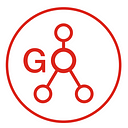Building the most comprehensive data bank on disasters — what we’ve learnt so far
In 2021, the IFRC launched the Global Crisis Data Bank initiative along with the UN Office for Disaster Risk Reduction (UNDRR), the UN Office for the Coordination of Humanitarian Affairs (UN OCHA), the World Meteorological Organization (WMO), and a number of other key partners. Thanks to support from USAID, we have made a lot of progress and learnt a lot about the nature, range, and gaps in disaster data. Since a lot has happened in the past two years,, we thought it was high time for an update.
Populating the database
With some seed funding from UNDRR, we completed some proof-of-concept development in the first half of 2022, but things really kicked into gear following the receipt of a two-year grant from USAID’s Bureau for Humanitarian Assistance Disaster Data, Assessment, and Information Management Team (DDAIM) later that year.
Since then, we have set up the structure and started to populate the Global Crisis Data Bank (GCDB) by importing, cleaning and harmonising all of the impact data from EM-DAT, the DesInventar national disaster loss databases, the Global Disaster Alerting Coordination System, the Global Internal Displacement Database — as well as the data from IFRC’s own systems and the National Red Cross/Red Crescent Societies. Most recently, we’ve begun importing data on earthquakes, floods and storms from the U.S. Geological Survey, the Global Flood Database and the National Oceanic and Atmospheric Administration, respectively, and then mapping past hazard footprints to the recorded impacts.
As of today, the GCDB contains more than 465,000 recorded impacts for over 97,000 past hazardous events — and counting. As you can see (figure 1), the majority of records have to do with the impacts of hazards on people. Given that most of the existing risk modeling has related to physical assets and economies, the GCDB will provide a solid basis for developing more human-centric risk analyses of relevance for vulnerable communities.
The initial analysis of the data also points to the persistent reporting bias, indicated by the increase in impacts recorded over time — including those caused by geophysical hazards which are unaffected by any changes in climate change (figure 2). At very least, this suggests that any temporal trend analysis will have to account for both improvements in recording disaster impacts as well as changes in demographic and socioeconomic factors as well as the changes in frequency and severity of weathe-related hazards due to climate change.
Next, we will
- disseminate the open data standards to our partners, with the support and advice of the initiative’s Technical Advisory Group;
- analyse this existing data — and the metadata — to identify spatial and temporal trends;
- approach critical friends from academia and elsewhere to critique the early results of our analysis, with a view to publishing them in the scientific literature;
- document the gaps, errors and systemic biases, and then develop a roadmap for addressing them;
- connect the GCDB to live data feeds so that it is always up to date with real-time data; and
- make it available to the broader humanitarian and research communities through a public interface and by surfacing insights on the GO platform.
Using the GCDB to enhance anticipatory action and disaster response
Having the data is great, but it’s even more important that we use it to drive decision-making. We are building this to connect with the IFRC’s GO platform, enabling systematic exchange between data providers, modellers and users. Currently, our national societies submit a field report to initiate an emergency record in the system, sometimes using the informtion we channel from partners to alert them to imminent risks.
When fully operational, the GCDB will allow us to connect hazard footprints from partners to information they collect through GO’s ecosystem of tools to understand the impact on vulnerable populations through to their interventions to mitigate such impacts. And in a virtuous cycle, we will also use that information to help make that data-collection and data-validation process more efficient through the use of predictive modeling and machine learning.
By making this connection, we aim to accelerate the process through which National Societies access funding to take anticipatory action and to respond to hazardous events. Furthermore, we are collaborating with OCHA and sharing our data to the Humanitarian Data Exchange, we’ll also help the UN allocate funding from its Central Emergency Response Fund.
In addition to improving these systems and tools, we are also training the National Societies how to use the data from the GCDB to develop early action protocols and plans so that they have more resources and capacities to take anticipatory action. Our first workshop, for National Societies in the Americas, will take place in Panama in August followed by one in Kuala Lumpur in September for National Societies in the Asia-Pacific region. By the end of these workshops, the National Societies will have empirical evidence concerning what hazards have had the most humanitarian impacts in their country, which areas of the country have been most affected by those hazards, and what impacts are associated with events that occur for different return periods — and they will use this evidence to draft a early action protocol so that they can each access US$ 200,000 or more in funding from IFRC for anticipatory action.
Looking ahead
Starting in the last quarter of the year, we will begin comparing the modeled hazard and impact forecasts with observational data from the field in order to assess which ones perform best. We will also begin sharing the observational data with the modeling teams in order to improve the accuracy of their models over time.
This will enable us to notify National Societies about forecasted hazards and their expected impacts — and to indicate clearly how confident we are regarding those predictions.
